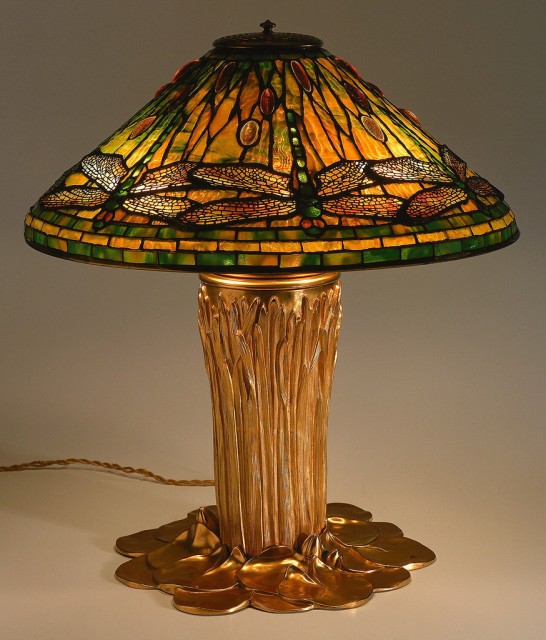I love the fact that this Tiffany lamp was purchased by the Carnegies, and that Cooper-Hewitt is located in their former house—a Fifth Avenue mansion completed in 1902.
Old photos of the interiors of the Carnegie mansion show that the Carnegies were avid enthusiasts of Tiffany glass lamps, which appear in almost every room. It is always great to have a piece together with photographic evidence that shows how it looked in the location where it was used by the original owner. This lamp, given by Andrew and Louise Carnegie’s only child, Margaret Carnegie Miller, appears in a 1930s photo of the library in Skibo Castle, in Scotland, which the Carnegies acquired near the site of Carnegie’s more modest birthplace. While Andrew Carnegie may have imported Scottish oak to New York for the paneling in the baronial hall, he also arranged for Tiffany lamps and even a full window to ship from New York to Scotland.
This Tiffany lamp was not converted to electricity but made for electrification, even though both the dragonfly motif of the shade and the lily pad base were available well before electricity was common. It is not surprising that the Carnegies opted for this modern advance, since they also opted for an electric elevator in their private residence. The bright gold surface on the lily pad lamp base may have been refreshed, but the base was originally available in both bronze and gilded finishes. The base appears to be brightly gilded in the Skibo Castle photo, and was designed to gleam with the light cast down from the shade. This lamp is an important piece by one of the most innovative American designers, who was also one of the first American designers to gain international renown.
Today is Andrew Carnegie’s birthday.

